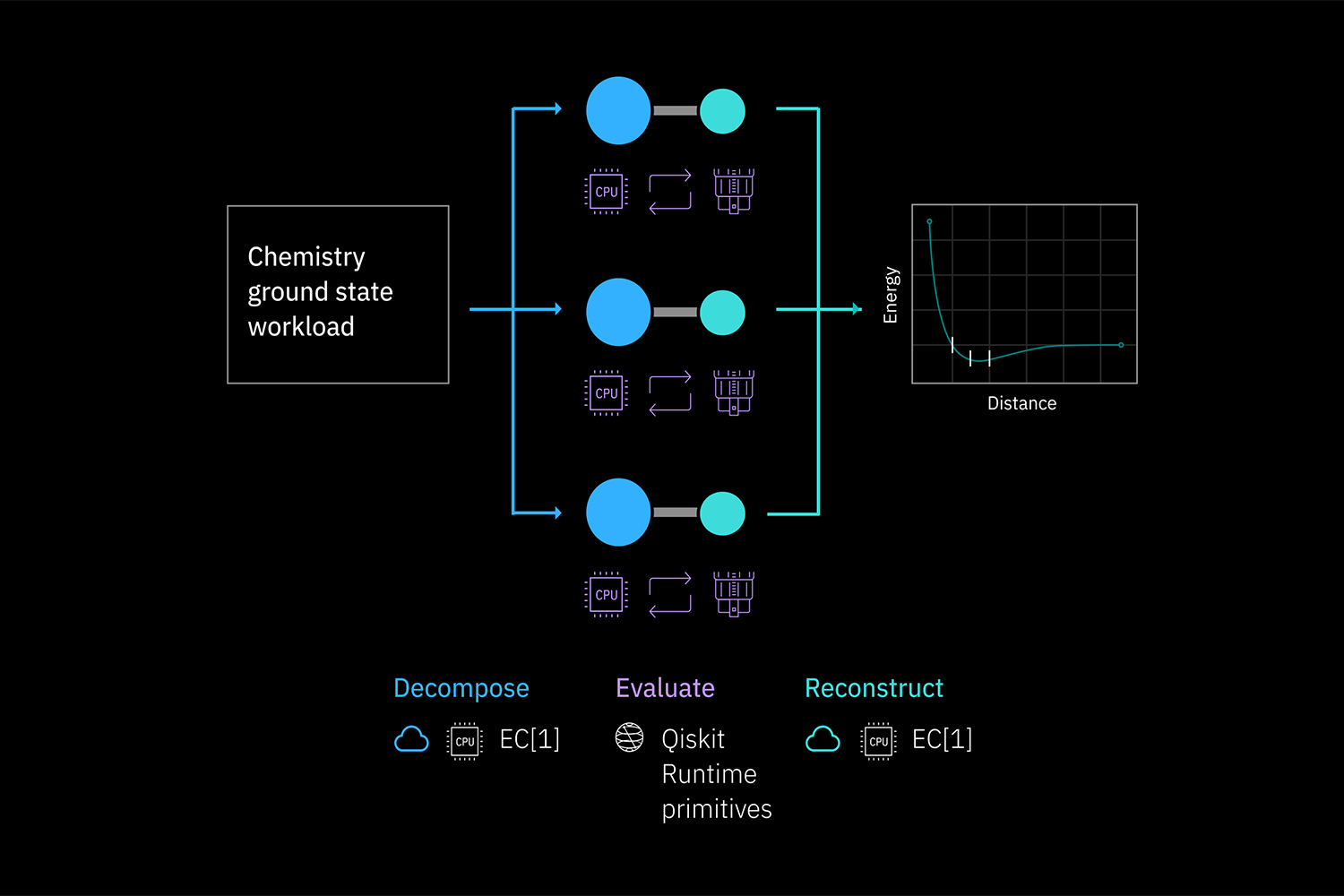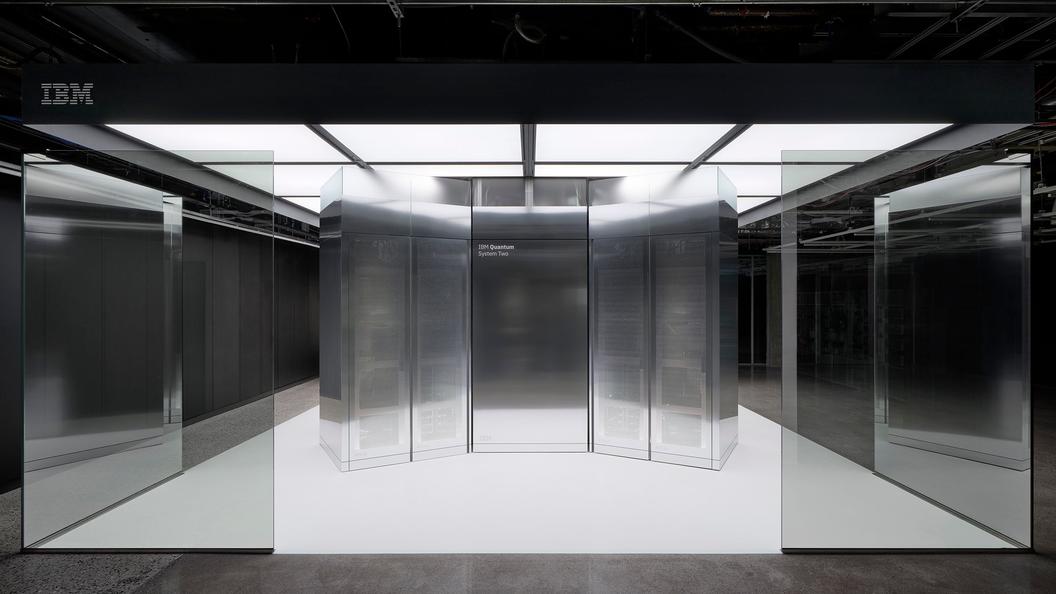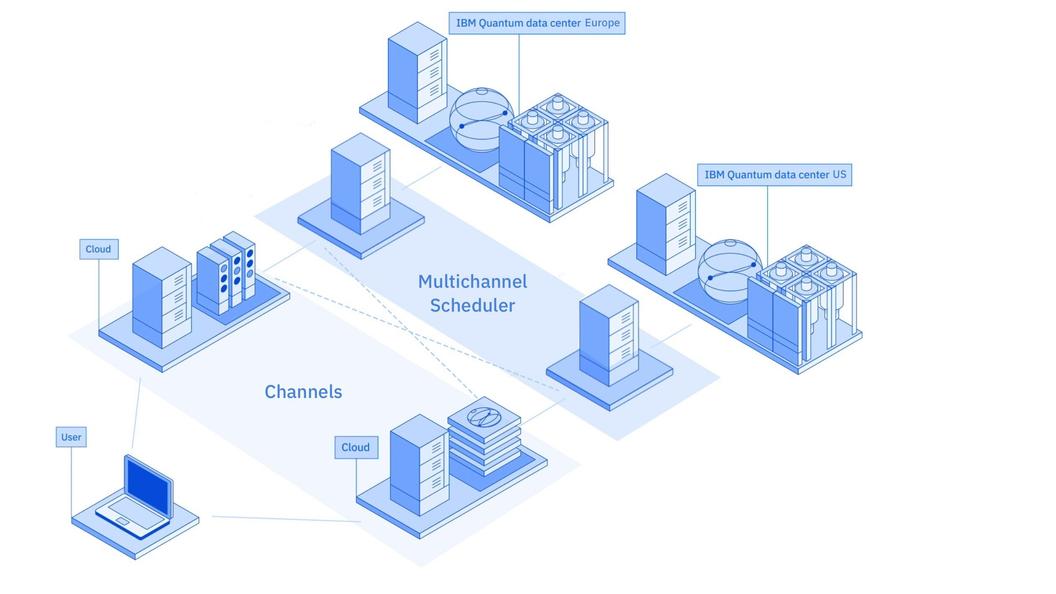Read more about the announcements made at the IBM Quantum Summit 2022:
Ever since we first put a quantum computer on the cloud back in 2016, we’ve been developing industry-leading hardware, software, and services for our users in order to prepare them for the next wave in computing. But as we’ve been following along our development roadmap, we realized that this year, we’re no longer just preparing. We’re ready to begin realizing the next wave in computation, and with it, useful quantum computing.
That’s why we chose “the next wave” for the theme of this year’s IBM Quantum Summit, the premiere event for IBM Quantum Network members. Today, we shared more than 10 announcements showing off new quantum computing hardware, software capabilities to extract value from those processors, and how our products and services are helping to create a global quantum computing ecosystem. We also declared 2023 as a major inflection point: we’re ready to begin realizing the quantum-centric supercomputer, a modular computing architecture which enables scaling, combining quantum communication and computation to increase computational capacity, while employing hybrid cloud middleware to seamlessly integrate quantum and classical workflows.
Increasing performance, value...
This year, our first top-line announcement was the introduction of the 433-qubit IBM Quantum Osprey, the largest quantum processor to date, three times larger than the Eagle processor
IBM Quantum breaks the 100‑qubit processor barrier. Read more.
We also debuted our third-generation control system, which will soon be capable of controlling 400 qubits in a single rack at an even lower price point than the previous generations. And we made strides in our other performance metrics — quality and speed — with a 4x improvement of quantum volume from 128 to 512 and a 10x improvement in Circuit Layer Operations Per Second
Driving quantum performance: more qubits, higher Quantum Volume, and now a proper measure of speed: CLOPS
But performant hardware alone won’t bring useful quantum computing: we need to provide value, which means advanced capabilities that our users can deploy frictionlessly. We announced several new capabilities at this year’s Summit. First, users can now employ error suppression into the Qiskit Runtime primitives by simply setting an optimization level in the API. Second, they can add increasingly advanced error mitigation strategies
Quantum error mitigation is the continuous path that will take us from today’s quantum hardware to tomorrow’s fault-tolerant quantum computers. This path will let us run larger circuits needed for quantum advantage, one hardware improvement at a time. Read more.
And finally, users now have full access to dynamic circuits, those which incorporate classical computing during the coherence time of the qubits to perform a richer array of circuit operations. Dynamic circuits will greatly reduce the length of certain quantum circuits, and are therefore crucial for the near-term potential of useful quantum computation.
...and adoption
Now that you understand how we plan to provide value, we’re showing the quantum community how to extract value from quantum computers by fostering the adoption of IBM Quantum products and services. We continue to invest in education initiatives that have reached over 5.4M learners as we prepare a workforce to advance quantum.
We’re also growing our IBM Quantum Network, which now numbers over 200 members, as we welcome innovation centers Arizona State University, DESY, IIT Madras, and uptownBasel; and new industry partners Bosch, Crédit Mutuel Alliance Fédérale, Erste Digital, Tokyo Electron, HSBC, and Vodafone. And we’re continuing to support the quantum community with our simplified offerings, including our open plan, our pay-as-you-go plan, as well as our premium plan and IBM Quantum Accelerator
The Accelerator offering provides resources to businesses at any point on their journey to quantum readiness. Read more.
But as we’re preparing the era of quantum usefulness, we’re aware that a quantum computer of sufficient scale and quality would crack today’s data encryption schemes, and it will take time to transition to new cryptography — so it’s crucial we begin preparing today. Since 2016, IBM has worked with standards bodies to define new quantum-safe cryptography standards to prepare for this new era. This year, the US National Institute of Standards and Technology (NIST) selected four algorithms for standardization — three of those algorithms
Read more about the algorithms IBM scientists developed and contributed to NIST’s post-quantum cryptography announcement this past July.
The next wave in computation
We said that 2023 would mark a major inflection point in quantum computing — where we begin to realize quantum-centric supercomputing. So, next year, we’re beginning to take the steps to get us there.
Sitting at the center of the quantum-centric supercomputer is advanced middleware, built for maximizing the performance of quantum applications running across parallelized, cloud-based, quantum- and classical-computational resources. This middleware will incorporate the Circuit Knitting Toolbox
Go to the Circuit Knitting Toolbox code repo on GitHub.
Go to the Quantum Serverless code repo on GitHub.

Quantum Serverless is a new programming model for leveraging quantum and classical resources.
Of course, we’re building our hardware around this vision for supercomputing. Next year, we’ll release the 133-qubit IBM Quantum Heron processor, based on our new tunable coupler architecture. Heron will be able to combine modularly and incorporate classical communication to speed up workflows, in order to take advantage of Circuit Knitting and Quantum Serverless features. But we can’t just think modularly — we also must scale in a cost-efficient way. So we’re developing our 4K cryo-CMOS qubit controller — which we can use to control qubits from inside the fridge, with a chip the size of a fingernail.
On the software front, you’ll soon be able to run circuits on parallel quantum processors with real-time classical communication using the Threaded Runtimes extension. Adding dynamic circuits we will hopefully allow users to run in 18 hours circuits which would take 180 years without these many advances. In addition, with the Flamingo in 2024 we be able to explore long range couplers and bring this time even shorter potentially 1ms.
What will quantum-centric supercomputing look like? Well, this year, we unveiled the designs for the core building block of quantum-centric supercomputing: the IBM Quantum System Two, for release in 2023. IBM Quantum System Two is a modular, extensible system that we foresee as a core building block for the quantum-centric supercomputer. System Two is the culmination of our advances into an iconic architecture, representative of the direction we’re taking the quantum age.
The 100×100 Challenge
Simplifying everything down, bringing about useful quantum computing is a two-fold path: IBM Quantum will develop performant, capable, and frictionless quantum-centric supercomputing. Meanwhile, we’re working together with our users to find potential use cases that could benefit from quantum computing—and with them, quantum advantage. We commit to the first part, and in order to help with the second, we’re announcing a challenge: the 100×100 Challenge.
What is the 100×100 Challenge? In 2024, we plan to offer a tool capable of calculating unbiased observables of circuits with 100 qubits and depth-100 gate operations in a reasonable runtime. We’re confident in our ability to deliver this tool thanks to Heron: If we can build a Heron processor with error rates below the “three-nines” gate fidelity threshold, plus the software infrastructure to read out the circuits in concert with classical resources, then we can run a circuit of 100x100 in less than a day and produce unbiased results. This system will be able to run quantum circuits with complexity and runtime beyond the capabilities of the best classical computers today.
Our mission statement is to bring useful quantum computing to the world. At this year’s Summit, we demonstrated that we’re well on our way to making that statement a reality, and showed you where we’re going from here. We’re going to continue to provide the best full-stack quantum offering in the industry — and it’s up to the industry to put those full-stack quantum systems to use. Together, let’s make useful quantum computing a reality.



